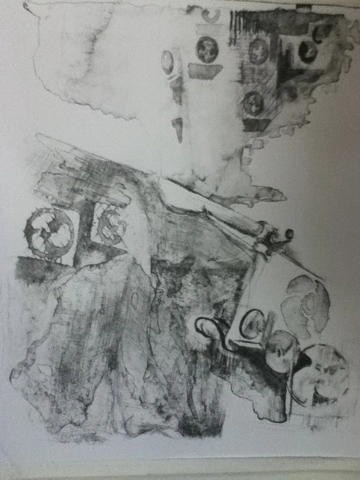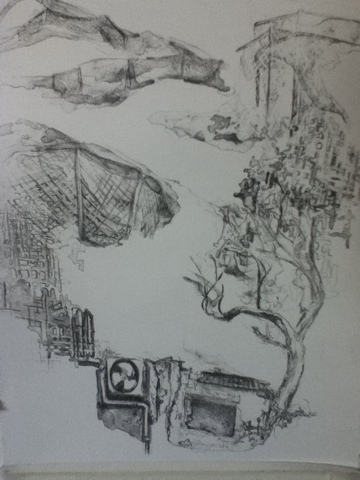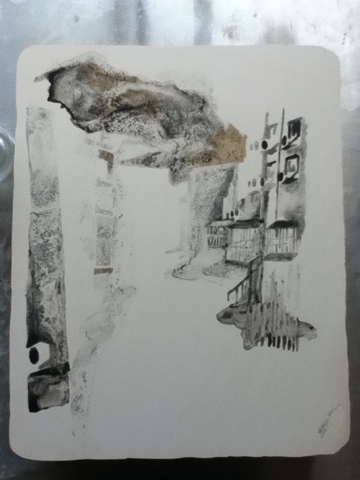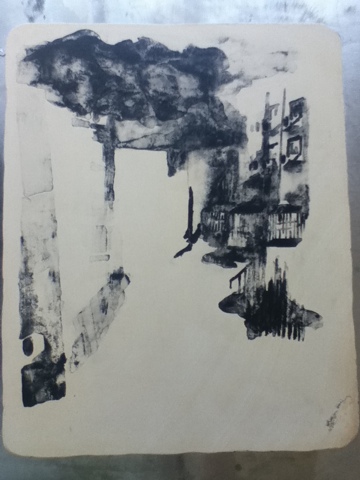I have been trying to loosen up, take more risks and work on processing some of what I have learned while in China. While I have been continuing my normal style of drawing I am also spending part of each day “playing”: doing things that are spontaneous, reacting to my current situation, saying things I would normally consider private, drawing more hastily than usual.
In the States I often made art by finding a point at which I run into a wall, either a physical barrier or some form of psychological resistance. At the point where there is tension something is happening worth talking about. Why is the wall there? How far does the wall go? I am not so much interested in reacting to the wall as exploring the interface, the place where the tension is created, the stone against my hand. This connects to my interest in urban space. I am fascinated by the space between people in a crowd and how pedestrians use space to their best advantage but are also sometimes frustrated by that space’s limitations. In my previous work I thought about how the infrastructure of Detroit ended up exacerbating inequalities and urban to sub-urban movement as the highways intentionally were built to bypass or bisect large areas of the city.
In moving to China, studying intensive language and starting lithography there were such a plethora of experiences (starting with the language barrier) that this sense of tension or focus was quickly drowned out in the every day tasks. If before I could say I metaphorically drew on walls, now I found myself in a construction zone where the walls are hidden behind piles of bricks.
These new drawings are not finished products but rather ways of processing my time in a visual form. One drawing is a rough calendar of my grant with conversations I have had plotted against it. In the process of making these drawings the events I am recording become illegible, covered over by other events. As I work the pieces destroy themselves while at the same time I start to pull patterns and meaning out of them. I don’t yet know how this will feed into the finished work I make, but I feel that it is worth recording here as a beginning of something…
Sketchbook #1: Process Sketches (incomplete/ early versions)
















